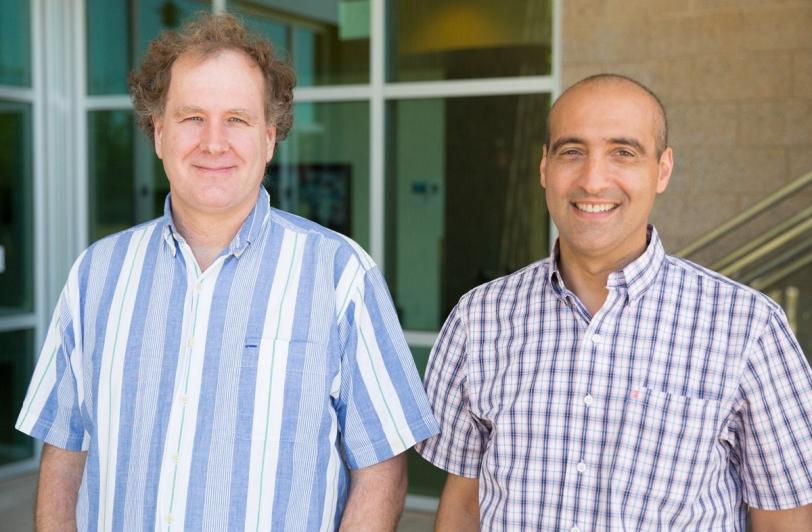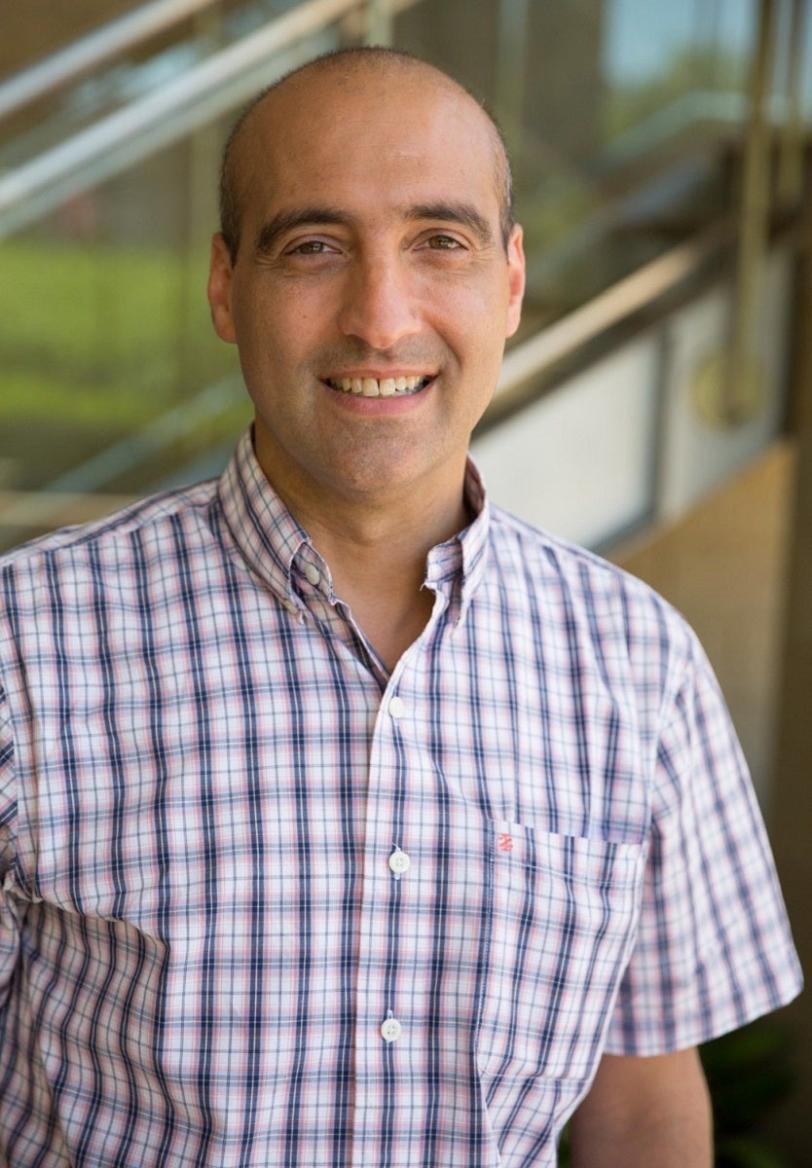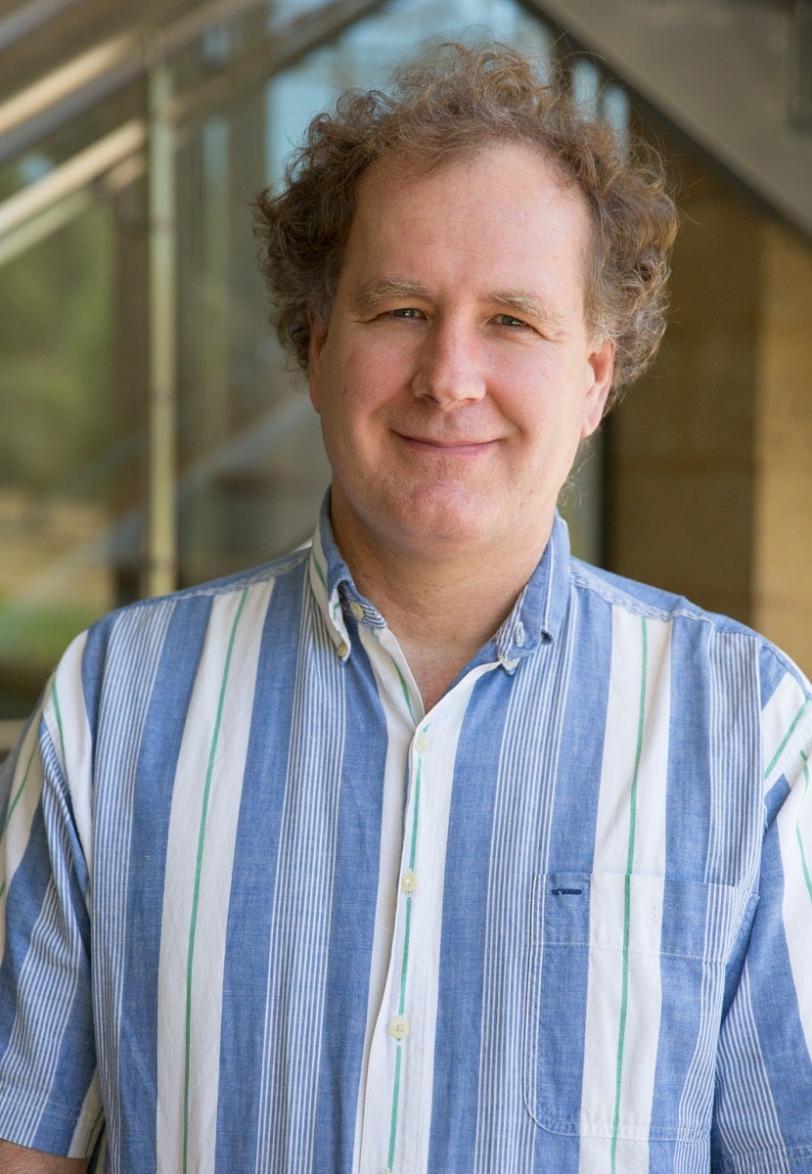Noted Dark Matter Experts Daniel Akerib and Thomas Shutt Join SLAC Faculty
Two dark matter hunters with decades of experience between them are turning SLAC into their base of operations for LZ, the next big dark matter search.
Two physicists who first met 20 years ago at the University of California, Berkeley, have finally made the move across the bay – after a few detours and a few decades spent becoming one of the most formidable dark matter-hunting duos known.
Daniel Akerib and Thomas Shutt, who join SLAC today as professors of particle physics and astrophysics, come from Case Western Reserve University in Ohio, where they've been working together on the Large Underground Xenon (LUX) dark matter experiment since 2008.
At SLAC they will help build a next-generation dark matter experiment called LZ, using the former site of the BaBar detector as their lab.
Dark matter is the invisible stuff that makes up about 85 percent of all the matter in the universe. Unraveling its mysteries was named a priority by the P5 Plan, a strategic plan for the future of U.S. particle physics that was released earlier this year, and SLAC is ready to take on that challenge. "Between them, Dan Akerib and Tom Shutt bring an unparalleled creativity, technical acumen and leadership to bear on this exciting endeavor," said David MacFarlane, associate lab director for particle physics and astrophysics. "We are very pleased to welcome experimentalists of their caliber to SLAC."
Forging a Partnership
The two men met and began to explore the mysteries of dark matter together during the mid-1990s at Berkeley, where Shutt was a graduate student and postdoc with Bernard Sadoulet, helping to develop the first generation of detectors for the Cryogenic Dark Matter Search (CDMS). After receiving his PhD from Princeton and completing a Caltech postdoc on the CLEO-II particle physics experiment at Cornell, Akerib arrived at Berkeley to work on CDMS in 1993.
Both left for faculty positions in the late 1990s: Shutt at Princeton, where he worked on the Borexino experiment, and Akerib at Case Western, where he set up a facility to test the CDMS project's germanium and silicon detectors at their working temperature, 20 thousandths of a degree Kelvin above absolute zero.
Once there, he tried to entice Shutt to join him in Ohio. When he learned in 2004 that his efforts had finally born fruit, "I was literally dancing in the street," Akerib said. "I knew it was only a matter of time before we would get to work together again."
For a few years Akerib continued his work on CDMS while Shutt co-founded the LUX project with Richard Gaitskell of Brown University. Then, in 2008, Akerib made the move to LUX.
Looking for Light from Dark Matter
Instead of using semiconductors as its detector material, as CDMS does, LUX uses extremely pure liquid xenon, and lots of it. Xenon is a scintillator: When a particle – even a dark matter particle – strikes it with enough energy, it sparkles, and those tiny flashes of light can be detected. The LUX detector is a giant tank filled with 370 kilograms of extremely pure liquefied xenon, installed a mile below the earth's surface to shield the xenon from particles of mundane matter. The detector is taking data in the Sanford Underground Research Facility, a converted South Dakota gold mine.
Here at SLAC, Akerib and Shutt will expand on what they've learned from LUX as members of LZ, which stands for LUX-ZEPLIN, the two smaller experiments that are joining together to create it. Akerib and Shutt are bringing their hardware and xenon-handling expertise to the task of building the LZ detector and filling it with seven tons of purified liquid xenon.
To do that, they needed space to spread out. Interaction Region 2, which previously housed the BaBar detector, offers that space, said Akerib – and, more importantly, the resources that go along with it. "Especially the people at the lab," he said. "Everyone we've worked with so far has been wonderful."
Before the two can really settle in, they must return to Ohio to pack up their labs and ship all their equipment to SLAC. They expect to be back by September when their partnership will kick into high gear once again.
"Tom's got technical gumption," Akerib said, when asked why he enjoys working with his colleague so much. "He's got an intuition for picking interesting hardware projects that we can really have fun building together."
For his part, Shutt said, "It's great to work with someone who has the ability to take those interesting hardware projects and actually make them happen."
An announcement by DOE and NSF on plans for supporting next generation direct dark matter experiments, including the LZ proposal, is expected any day now.
SLAC is a multi-program laboratory exploring frontier questions in photon science, astrophysics, particle physics and accelerator research. Located in Menlo Park, Calif., SLAC is operated by Stanford University for the U.S. Department of Energy's Office of Science.
SLAC National Accelerator Laboratory is supported by the Office of Science of the U.S. Department of Energy. The Office of Science is the single largest supporter of basic research in the physical sciences in the United States, and is working to address some of the most pressing challenges of our time. For more information, please visit science.energy.gov.








